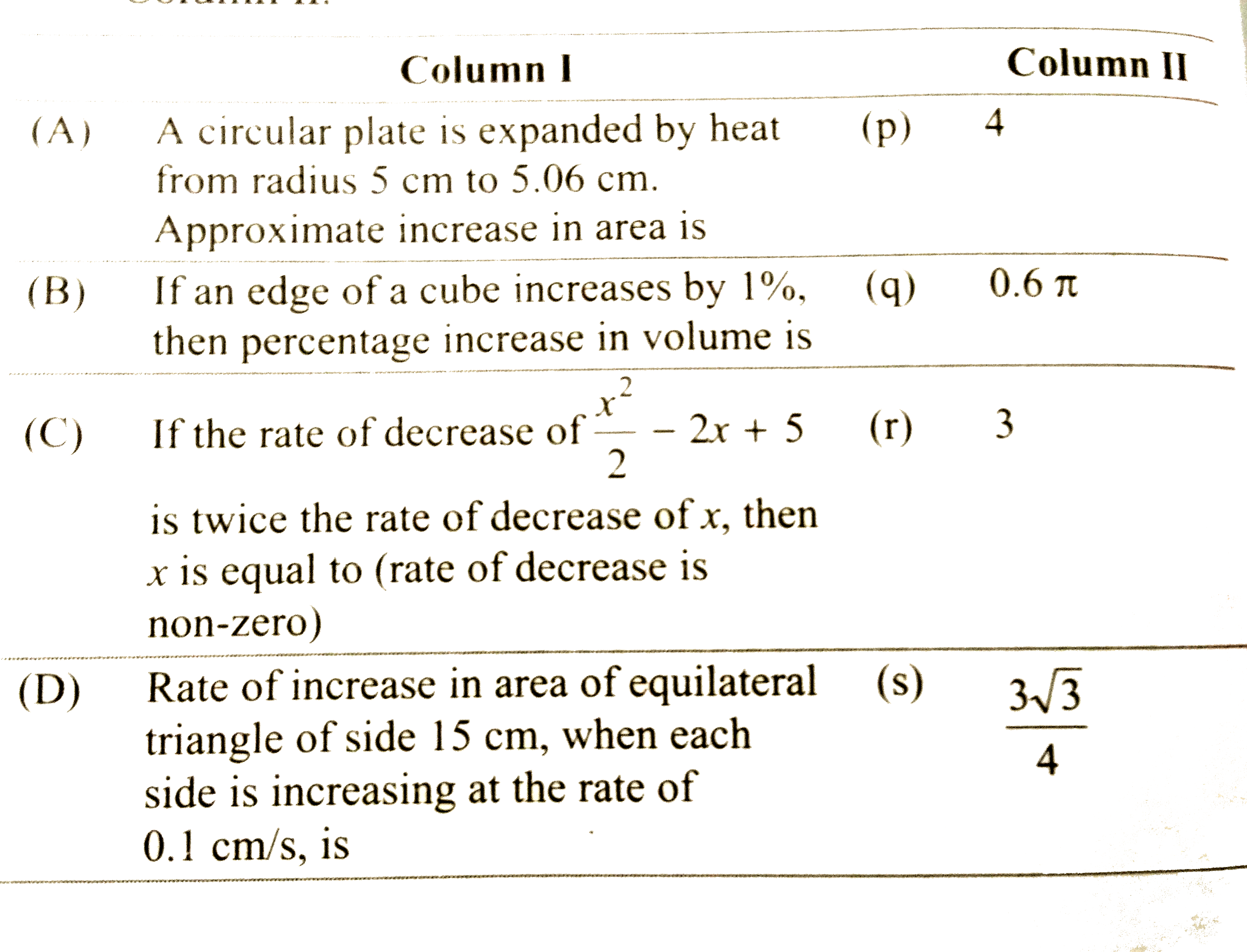A point is moving along the curve y3=27x. The interval in which the abscissa chnages at alower rate than ordinate, is (a, b). Then (a+b) is ………….Solution in Punjabi
Step by step video & image solution for A point is moving along the curve y^(3)=27x. The interval in which the abscissa chnages at alower rate than ordinate, is (a, b). Then (a+b) is …………. by Maths experts to help you in doubts & scoring excellent marks in Class 12 exams.
Updated on:21/07/2023Topper's Solved these Questions
- DY / DX AS A RATE MEASURER AND TANGENTS, NORMALS BOOK - ARIHANT MATHSCHAPTER - DY / DX AS A RATE MEASURER AND TANGENTS, NORMALS EXERCISE - Exercise (Subjective Type Questions)
12 Videos
- DY / DX AS A RATE MEASURER AND TANGENTS, NORMALS BOOK - ARIHANT MATHSCHAPTER - DY / DX AS A RATE MEASURER AND TANGENTS, NORMALS EXERCISE - Exercise (Questions Asked In Previous 13 Years Exam)
7 Videos
- DY / DX AS A RATE MEASURER AND TANGENTS, NORMALS BOOK - ARIHANT MATHSCHAPTER - DY / DX AS A RATE MEASURER AND TANGENTS, NORMALS EXERCISE - Exercise (Matching Type Questions)
1 Videos
- DIFFERENTIATION BOOK - ARIHANT MATHSCHAPTER - DIFFERENTIATION EXERCISE - Exercise For Session 10
4 Videos
- ELLIPSEBOOK - ARIHANT MATHSCHAPTER - ELLIPSEEXERCISE - Exercise (Questions Asked In Previous 13 Years Exam)
26 Videos
Similar Questions
Show that a tangent to an ellipse whose tangent intercepted by the axes is the shortest, is divided at the point of tangency into two parts respectively, is equal to the semi-axes of the ellipse.
View SolutionThe slope of the tangent to the curve (y−x5)2=x(1+x2)2 at the point (1,3) is.
View SolutionMatch the statements of Column I with values of Column II.

View SolutionThe functions f(x)−ex+x, being differentiable and one-one, has a differentiable inverse f−1(x) The value of ddxf−1 at the point f(log2) is
View SolutionThe minimum area of the triangle formed by the tangent to x2a2+y2b2=1 and the coordinate axes is
View SolutionOn the curve x3=12y, find the interval of values of x for which the abscissa changes at a faster rate than the ordinate?
View SolutionA point is moving along y^(3)=27x. The interval in which the abscissa changes at slower rate than ordinate is
View SolutionA particle moves along the curve x2=2y. At what point, ordinate increases at the same rate as abscissa increases ?
View SolutionOn the curve x3=12y, find the interval at which the abscissa changes at a faster rate than the ordinate.
View SolutionA particle moves along the curve y2=8x. At what point on the curve do the abscissa and ordinate increase at the same rate?
View SolutionAn object moves along the curve y=f(x). At a certain point, the slope of the curve is 0.5 and the abscissa is decreasing at the rate of 3units/sec. At the point, the ordinate is
View SolutionA particle is constrained to move along the curve y=√x starting at the origin at time t=0. The point on the curve where the abscissa and the ordinate are changing at the same rate is
View SolutionA particle moves along the curve x2=2y. At what point, ordinate increases at the same rate as abscissa increases ?
View SolutionOn the curve x3=12y, find the interval of values of x for which the abscissa changes at a faster rate than the ordinate?
View SolutionOn the curve x3=12y, find the interval of values of x for which the abscissa changes at a faster rate than the ordinate?
View Solutionएक बिंदु वक्र y3=27x के अनुदिश गति करता है । वह अंतराल जिसमें भुज, कोटि से धीमी गति से परिवर्तित होता है होगा
View Solution
